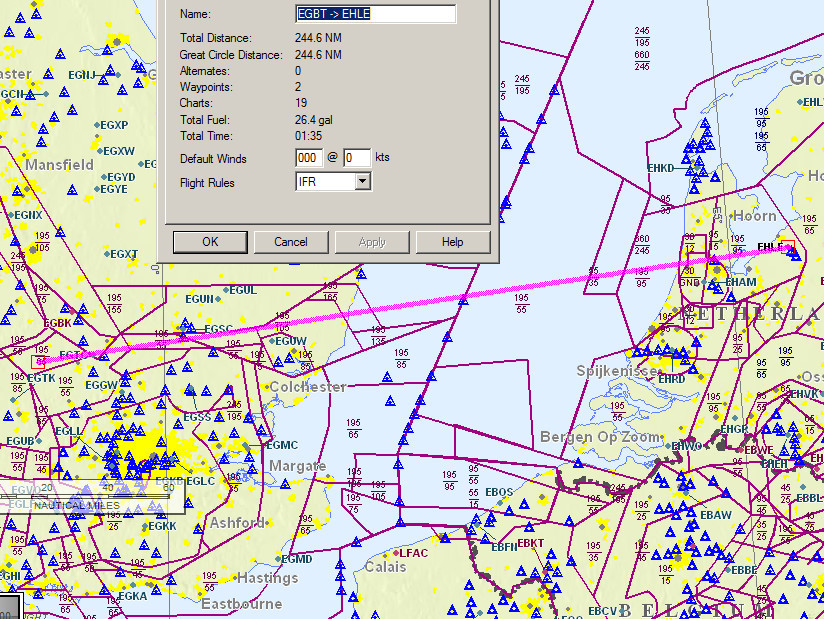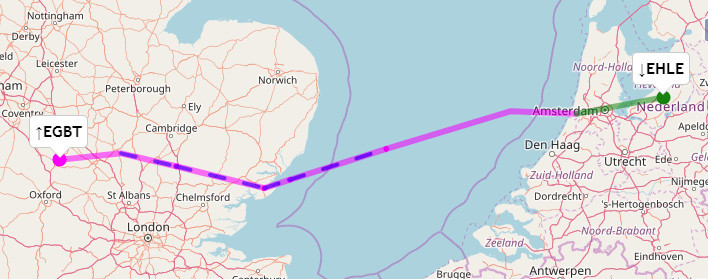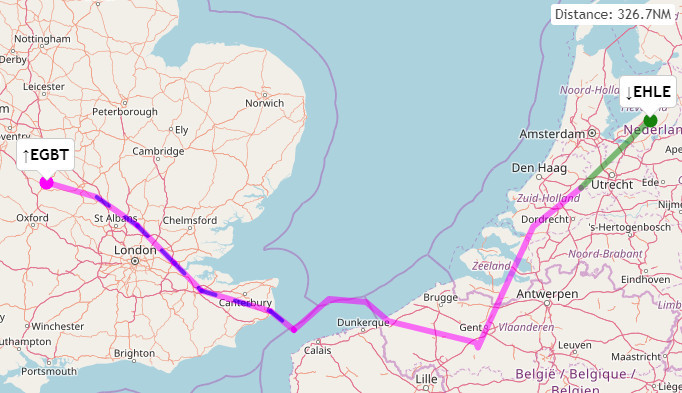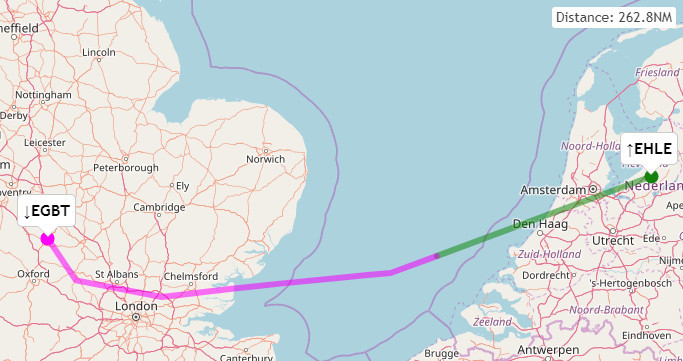Peter wrote:
BTW there is yet another route: IMCR → FAA IR → CBIR
what is the advantge of this way?
other question the IMC can be used only on a G reg or on any other EASA reg aircraft??
The IMCR training hours (min 15) can be used towards the FAA IR minimum training time. Not everybody involved in FAA training in Europe agrees with that, but that is just another symptom of creative reading of the FAA regs. OTOH another reading of the regs is that the instructor you had for the IMCR needs to have had a full ICAO IR, not just the IMCR also which is what most UK FIs (who train the IMCR) have.
The IMCR is not limited by aircraft reg. The FAA has also confirmed it is valid for an N-reg – here.
The IMCR training hours (min 15) can be used towards the FAA IR minimum training time.
Even if people still quibble about whether the hours are creditable, the skills learnt in the IMC rating certainly are.
Many years ago when I did my IR in the States, my Instructor was astounded at my ADF abilities – usually for most one of the hardest things to master.
After just one hour, he declared “you’ve got that tapped, let’s concentrate on the rest of the course”.
I don’t think anyone would argue with Timothy’s point that the current IR TK syllabus has the potential to save someone’s life – some day, somewhere, somehow. So the question is: at what cost?
Is it fair to argue that the current “gold-plating” of GA instrument flight in most of Europe (not just the TK, but also ATO, language, medicals, aircraft equipment, quasi-certification of homebuilts…) may actually be killing more airmen than it could ever save? I don’t feel qualified to judge – I only fly 20-30 hours a year in IMC – but there seems to me a parallel with the discussion (and hiatus) regarding GPS cloud-breaks and approaches to non-instrument runways.
It’s not so bad for us Brits. Most of us already speak English (after a fashion), and we have the IMCR “stepping stone”. But hats off to any European instrument pilots, because the mountain they have to climb from PPL to IR looks almost impregnable.
Perhaps EASA and our CAAs are institutionally incapable of acting decisively on the basis of a broad assessment of risk. Civil engineers do this routinely so that a railway engineer may keep trains running while maintaining the track, balancing the risk to workers against the risks associated with overcrowding other parts of the rail network, or the roads. Is the underlying problem that EASA’s rule-making processs is designed to focus on one category of risk at a time, to the detriment of overall safety?
The requirement of using an ATO might not be as stringent as it might be.
When I did my MEIR:
- I never went to the FTO base
- Did about ~zero paperwork
- The instructor came to the airfield of my choice, in a plane I was renting.
- ATO fee was cheap
I fail to see what an independent instructor would have really improved.
I don’t know the latest on this but a few years ago this wasn’t possible here in the UK.
The last guy I heard of who went some way along this process (doing specialised PPL/IR training) posted here a few times a long time ago but I can’t find him now. One thread is here. Based on what I heard recently I am not sure if he is still doing it.
What a freelance FI gives you is convenience because you book directly with him/her. Plus you aren’t paying any FTO overhead. Plus of course you can pay cash which will halve the cost immediately  In the FAA system the examiner is usually freelance also; in the UK the checkride costs c. GBP 800.
In the FAA system the examiner is usually freelance also; in the UK the checkride costs c. GBP 800.
If any of the above is out of date, it would be useful to know.
I did that in the UK (around London), in early 2017.
Just responding to your points:
The ground school I did a longer time ago (I did SEIR first), 2 half days over a weekend. These were completely useless (what can you really cover in 8h?), BUT it was manageable time wise. I understand pre CBIR it was something in the order of 1-2 weeks, which is horrible, especially for self-studiers.
There was no paperwork involved for the plane I rented. It wasn’t an ATO plane (I rented from the same person I rented the DA40 from).
I trained away from the base.
I paid 300 pounds / full day for the instructor. This doesn’t seem super high (“Cirrus instructors” are >= 400 GBP / day, and instructors in the NYC area (since i’m comparing with London) are very expensive too (Where I rented – a cirrus centre, it was more expensive (120 USD/hour (where the instructor is with you, not just flyin).
You’re right on the checkride costs. I think 775 is the exact figure.
Sort of on-topic. Our son has just applied to study for the next academic year in Utrecht (nearest light GA airfields Lelystad EHKE and maybe Hilversum EHHV). I’ve already planned the VFR route on Skydemon, It’s one stop (Oostende or similar) or if we haven’t drunk much tea at breakfast and the winds are favourable maybe non-stop. So, would upgrading my IRR to a full IR be worth the effort in the benefits it would give? I would be in no-FIKI, no-oxygen aeroplanes from Turweston EGBT or Henlow EGWE.
What does the team think please? I think the answer is yes, it will make the trip a lot easier but is it worth all that compulsory TK time? The flying training I am happy to do.
EHKE doesn’t exist; I assume you mean EHLE.
Do you want to fly the shortest route, over the water? If so, VFR is the best way because you won’t get a CAS join out of EGBT anytime soon after departure from there.

This is one route, from Autorouter, but you won’t get a climb to a decent altitude until well past London IMHO

If you want to avoid the water, I did this routing via IRKUN (just picking some waypoint which takes you across the narrow water crossing) and then had to add EBOS as another fly-by waypoints, and you get this which is silly on two counts: you won’t get the route across London and the subsequent doglegs are silly (though, possibly, you won’t have to actually fly them on the day, but as always you never know for sure)

Maybe others may have an idea. One could spend more time hacking a better route.
The above is for the outbound. The return route is another set of issues. This one validated

IFR is generally easier than VFR because controlled airspace “disappears” – except when you have a VFR airport and then you are back in the “old familiar territory”. But in this case you will be spending a lot of time held down by London Control at the UK end, probably at 2300ft.
It probably needs more time spent on routing development.
My feeling is that The Netherlands are very flat, that it would be a regular run, so you would soon get to know all the nuances of the airspace and your trips are social, not critical (if you had to cancel for weather, your son would understand, sigh and go back to the whacky brownies) so I would probably just do it “VFR”.